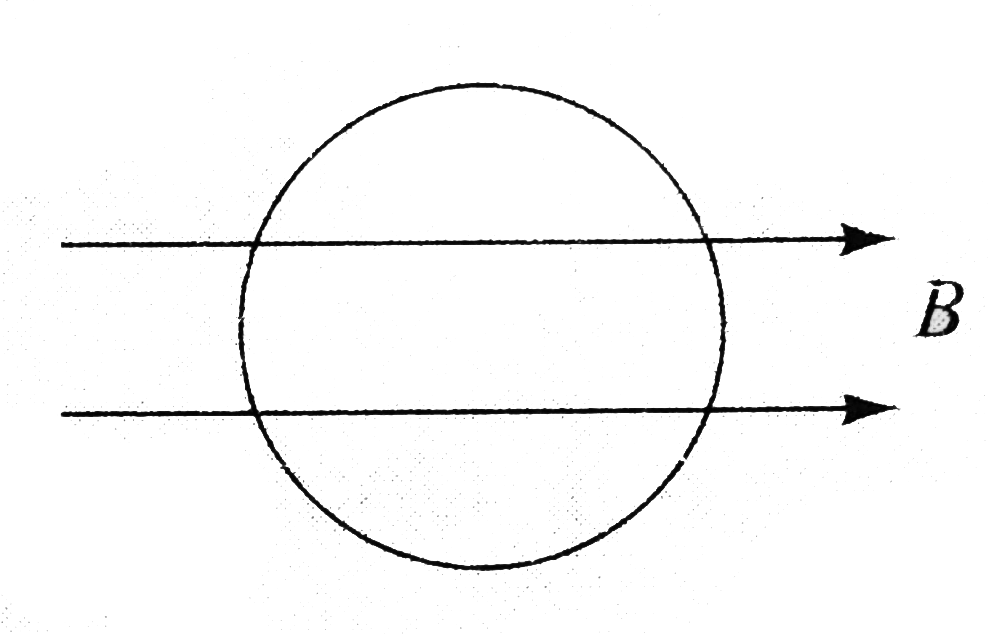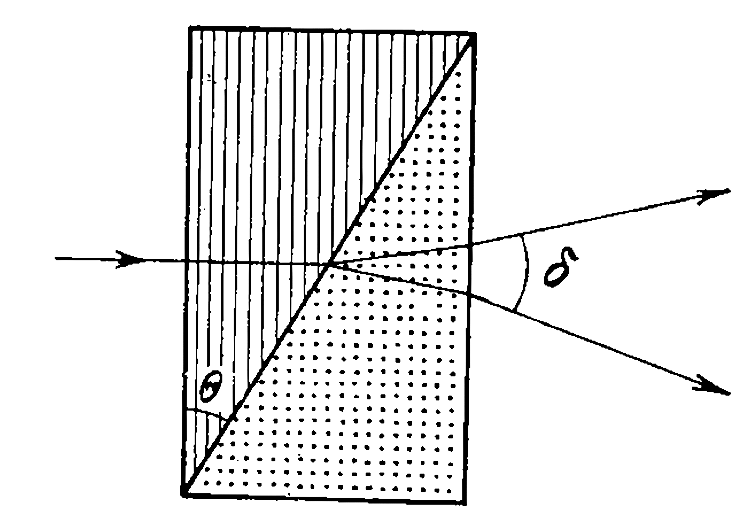A narrow beam of plane-polarized light passes through dextrorotatory positive compound placed into a longitudinal magnetic field as shown in Fig. Find the angle through which the polarization plane of the transmitted beam will turn if the length of the tube with the componed is equal to , the specific rotation constant of the compound is equal to , the verder constant is , and the magnetic field strength is .

We write
We look against the transmitted beam and count the positive direction clockwise. The chemical part of the rotation is annulled by reversal of wave vector upon reflection.
Thus
SInce in effect there is a single transmission.
On the other hand
To get the sings right recall that rotatory compounds rotates the plane of vibration in a clockwise direction on looking against the oncoming beam. The sense of rotation of light vibration in Faraday effect is defined in terms of the direction of the field, positive rotation being that of a right handed screw advancing in the direction of the field. This is the opposite of the definition of for the present case. Finally
(Note: If plane polarized light is reflected back & both fourth through the same active medium in a magnetic field, the Faraday rotation increases with each traveresal.)
Topper's Solved these Questions
- OPTICSBOOK - IE IRODOV, LA SENA & SS KROTOVCHAPTER - OPTICSEXERCISE - Dispersion And Absorption Of Light
24 Videos
- OPTICSBOOK - IE IRODOV, LA SENA & SS KROTOVCHAPTER - OPTICSEXERCISE - Optics Of Moving Sources
22 Videos
- OPTICSBOOK - IE IRODOV, LA SENA & SS KROTOVCHAPTER - OPTICSEXERCISE - Diffraction Of Light
60 Videos
- MECHANICSBOOK - IE IRODOV, LA SENA & SS KROTOVCHAPTER - MECHANICSEXERCISE - Mechanics Problems
92 Videos
- OSCILLATIONS AND WAVESBOOK - IE IRODOV, LA SENA & SS KROTOVCHAPTER - OSCILLATIONS AND WAVESEXERCISE - Electromagnetic Waves, Radiation
36 Videos
Similar Questions
A positively charged disk is rotated clockwise as shown in Fig. The direction of hte magnetic field at a point A in the plane of the disk is
View SolutionMonochromatic plane-polarized light with angular frequency ω through a certain substance along a unifrom magnetic field h. Find the difference of refractive indices for right-hand and left-hand components of light beam with circular polarization if the verdet consatnt is equal to V.
View Solution
Knowledge Check
A positively charged disk is rotated clockwise as shown in Fig. The direction of hte magnetic field at a point A in the plane of the disk is
A⊗(into the page)B3/4→C←3/4D⊙ (out of the page)Ordinary light is converted into plane polarized light by passing through a ________.
Anickel prismBglass prismCNicol prismDglass slabOrdinary light is turned into plane-polarized light by passing it through a lens made of the material known as Polaroid. It consists of
Acellulose chlorideBcellulose nitrateCcellulose sulphateDcellulose carbonate
A beam of plane-polarized light falls on a polarizer which rotates about the axis of the ray with angular velocity ω=21rad/s. Find the energy of light passing through the Polarizer per one revolution if the flux of energy of the incident ray is equal to Φ0=4.0mW.
View SolutionA coil is placed in a constant magnetic field. The magnetic field is parallel to the plane of the coil as shown in Fig. 3.28. Find the emf induced in the coil if B increasing.

View SolutionA coil is placed in a constant magnetic field. The magnetic field is parallel to the plane of the coil as shown in Fig. 3.28. Find the emf induced in the coil if B increasing.

View SolutionA partially plane polarised beam of light is passes thorugh a polaroid. Show graphically the variation of transmitted light with angle of rotation of polaroid.
View SolutionA narrow beam of natural light with wavelength λ=589nm falls normally on the surface of a Wollaston polarizing prism made of Iceland spar as shown in Fig. The optical axes of the two parts of the prism are mutually perpendicualr. Find the angle δ between the directions of the beams behind the prism if the angle θ is equal to 30∘.

View Solution
